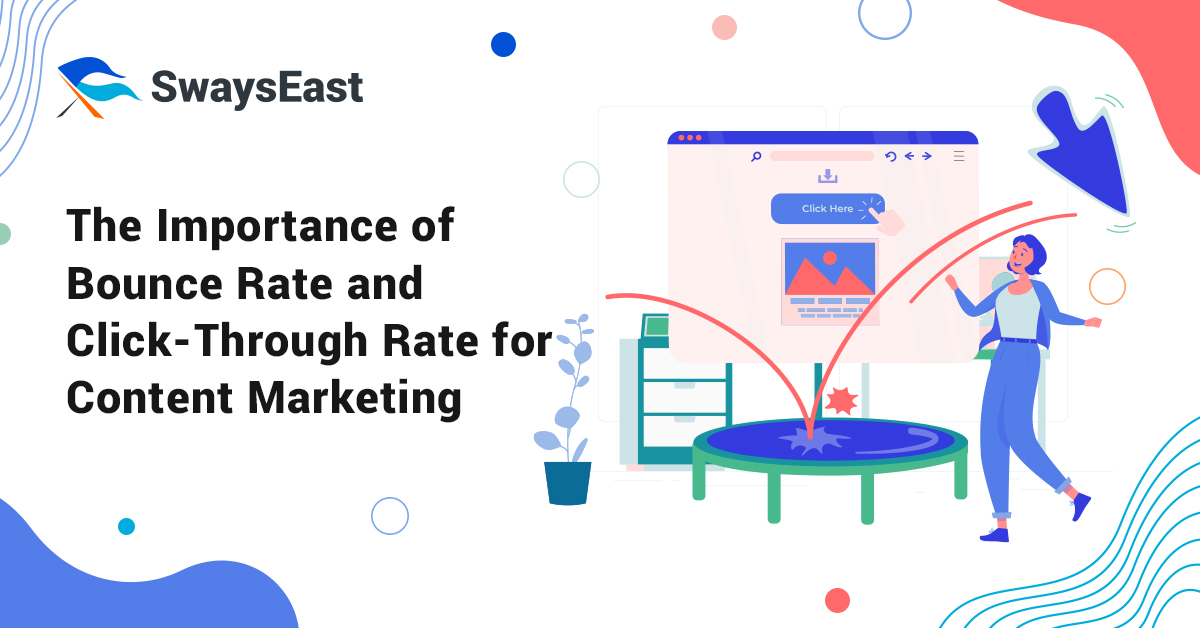Bounce rate and clickthrough rate are two of the most important parameters that website owners need to monitor.
The two terms have become synonymous with web development, but many website owners and developers lack a clear understanding of them. In this article, we’ll explore what bounce rate and click-through rate are, why it’s important to understand them, and what good targets would be.
Defining Bounce Rate and Click-Through Rate
A bounce rate measures how many people leave a website after only visiting the page they entered from.
In other words, if your homepage bounce rate is 60%, it means that out of every 100 visitors to your homepage, 60 do not visit any other pages on your website.
Your clickthrough rate, or CTR, measures how many people visit your website after clicking on your pay-per-click advertisement. If your CTR is 25%, for example, it means that for every 100 people who viewed your ad, 25 clicked on it.
The Importance of Bounce Rate and Click-Through Rate
The bounce rate is the first thing to consider. The lower the bounce rate, the more effective your content reaches your audience.
However, there are exceptions to this rule. A survey form, a page pointing to another domain’s product sales, and a banner ad with pay-per-click are examples of pages that have a bounce rate of 100% but still reach the target audience. A high bounce rate on a normal web page signifies that your content isn’t reaching your target audience as effectively as you would like.
CTR vs. Bounce rate
Bounce Rate
High bounce rates are not favorable, unlike many other content marketing metrics. Your site’s traffic is calculated when someone visits a single page. Bounce rate means that your site visitors don’t do anything else on the page before exiting.
People may not find what they need in your content. That’s not helpful for product pages. It could also be due to slow loading times, irrelevant or low-quality content, poorly designed landing pages, or poor user experience.
Different types of websites have different bounce rates. It’s not a big deal if it’s your homepage. Besides, you don’t want your users hanging around on other pages if all your products are on other pages.
You don’t need to worry if you write a high-quality blog. There is a possibility that they’ve found the answer they’re looking for. So you’re right on target.
According to SEMrush, 26% to 40% is considered a low bounce rate, 41% to 55% is regarded as an average bounce rate, and 56% to 70% is considered a high bounce rate. Find out what the average is in your industry. Then you can proceed to strategize how to improve your rates.
Click-Through Rate
On the other hand, click-through rate (CTR) is also important. It tells you which content performs best. It’s everyone’s goal to get the highest CTR on the SERPs for SEO.
The CTR of your paid search ads will be affected by several factors including title, keywords, meta description, and CTA copy.
To find out your CTR, you can use the Search Analytics feature in Google Search Console. Alternately, you could also compute your CTR with this formula: clicks ÷ impressions = CTR. For example, if you had 8 clicks and 100 impressions, then your CTR would be 8%.
You would think that a higher clickthrough rate would be better since it would mean that more people are clicking on your PPC ads, right?
However, the answer is not so clear-cut. The conversion rate (or the percentage of views that become sales) matters more than the click-through rate (which measures the percentage of people who click the ad). Therefore, a high CTR is neither a good nor a bad sign.
In other words, a low CTR does not necessarily indicate that your content is not reaching the right people.
Your low CTR might be due to only qualified and knowledgeable people clicking through your ads.
In contrast, a high CTR does not always mean that your announcements are reaching the right viewers, since curiosity clicks (that lead to no sales) are often contributing factors.
It is important to measure bounce rates and clickthrough rates as part of your online advertising campaign and your site as a whole, but they are just the beginning.
In order to know when to change things and when to keep going, you must understand what these rates mean.
Using a combination of bounce rate and CTR is a good way to assess your content and find a basis for what to create next. This gives you a solid foundation to create quality content based on real customer data.
If you want to create an incredible digital marketing strategy, invest in AI driven marketing tools like SwaysEast.
SwaysEast offers a suite of smart digital marketing tools to help brands create innovative solutions and experience their very own AI digital marketing success stories. Book for a FREE APPOINTMENT today.

